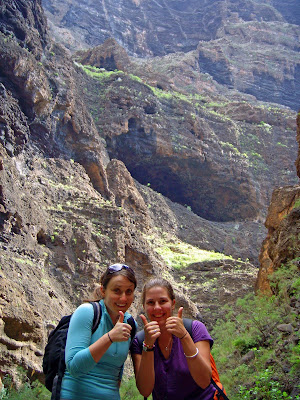Last Saturday was a black-out day. This means there was no electricity on the ship from 7am onward, so most people went off ship to explore our new surroundings in town. My roomie Sandra and I decided we would stay on board and try something new: help out in the engine room to clean the water coolers. With our arrival into the port just a few days prior, we didn't yet have local Africans working on the ship to help out downstairs. The Chief Engineer asked for help from the non-engine room folks onboard, and Sandra and I thought it would be fun to volunteer for something so different.
During the sail shells, sand, and other fun things make their way into the water cooling system. It's necessary to clean the coolers before and after each sail to keep the water freely flowing and the engines cool. This is a full day task that involves turning off all the generators to clean, hence the blackout. I-pods and speakers in hand, we headed downstairs to suit up and get cleaning. Below you can see all the gunk that had accumulated.
Here are Sandra and I with the other non-engine room helpers Ginger and Alainie after our first cleaning attempt. Different teams took turns cleaning due to the strenuous nature of the work.
Cleaning involved inserting a long, thin, flexible brush into the holes to clear out all the shells and other sea remnants that restricted the water flow. One of the brushes even had an electronic hose head to help dissipate the sea remains and get through the cooler. Removing the brush also removed whatever was stuck inside. We only got shells, sand and smelly sea water, but in the past they've had live crabs!
There are 1500 holes in each water cooler and the brush goes into the cooler for about three meters before it comes back out again. With two coolers onboard, that math alone means we cleaned miles of water cooler space!
Here we are taking a break between two of our six engines. They were off the entire time we were downstairs, but it was still pretty hot. The engines themselves were about 125 degrees Fahrenheit.
Despite our multiple battle wounds...
...we are still smiling at the end of the day with some of the regular engine room guys!
...we are still smiling at the end of the day with some of the regular engine room guys!
To top off our experience, one of our engine room friends Dennis let us re-start the ship after our day long black out! Perhaps not a normal day by Mercy Ships standards, but nontheless, fun times were definitely had in the engine room!






















